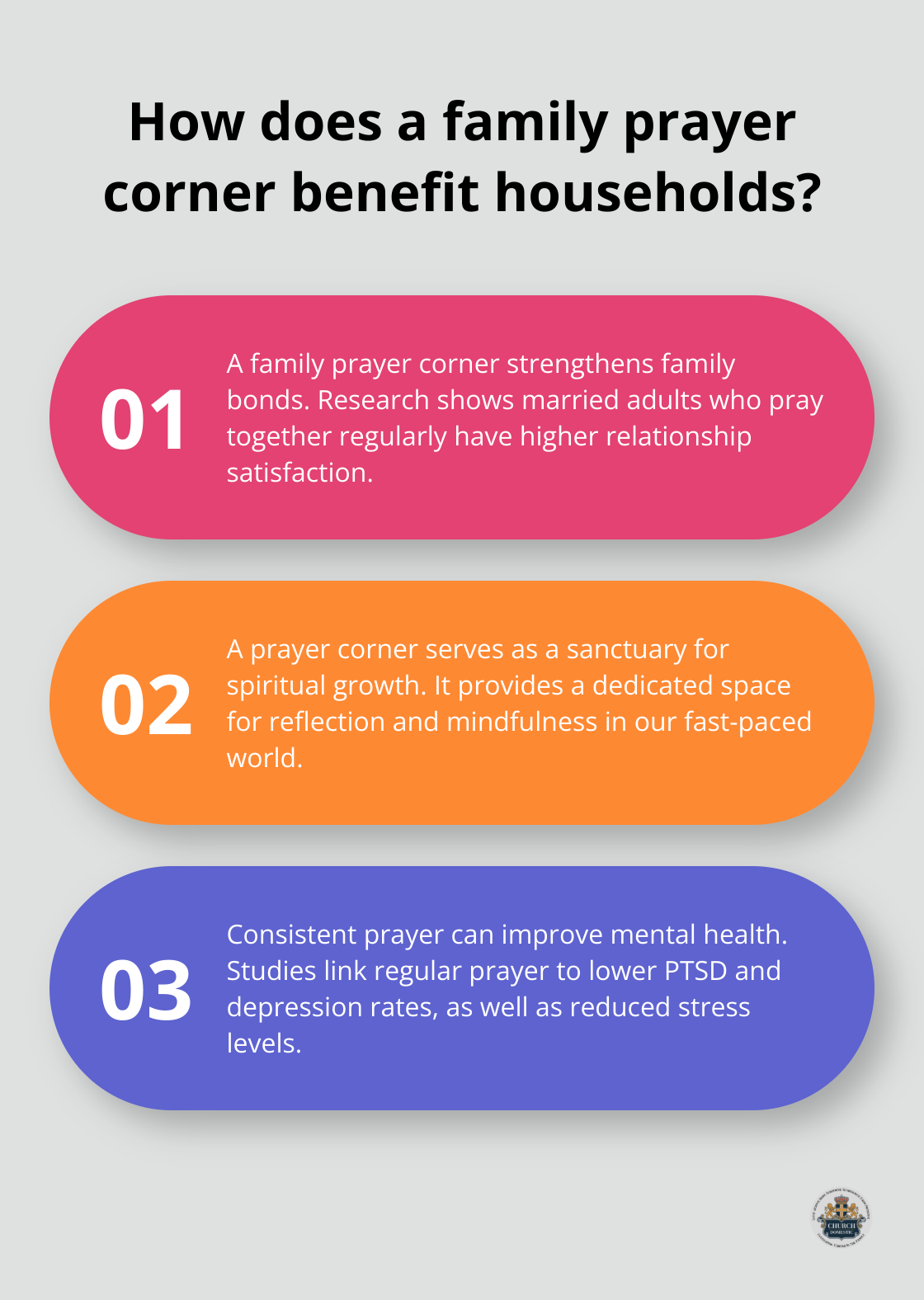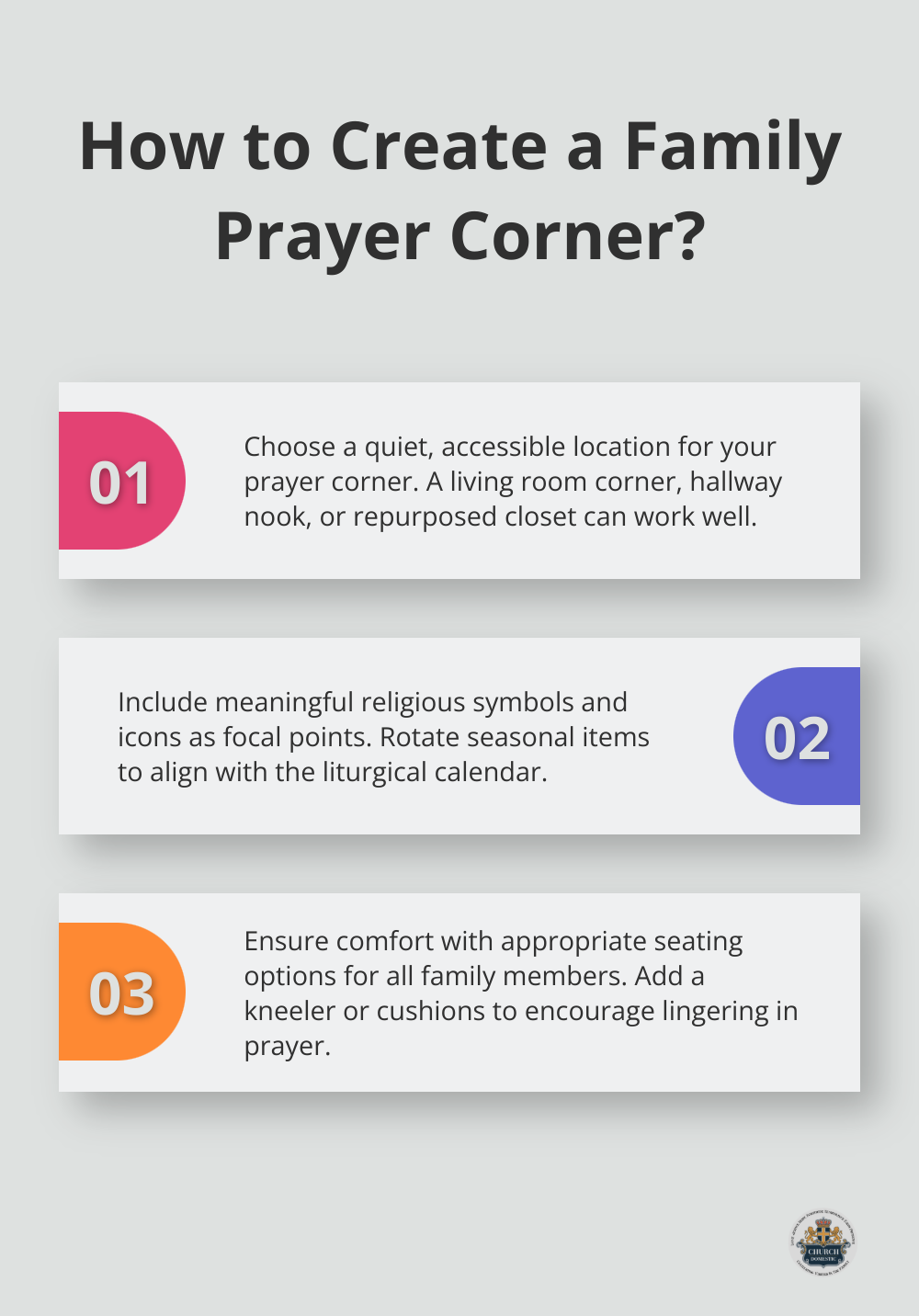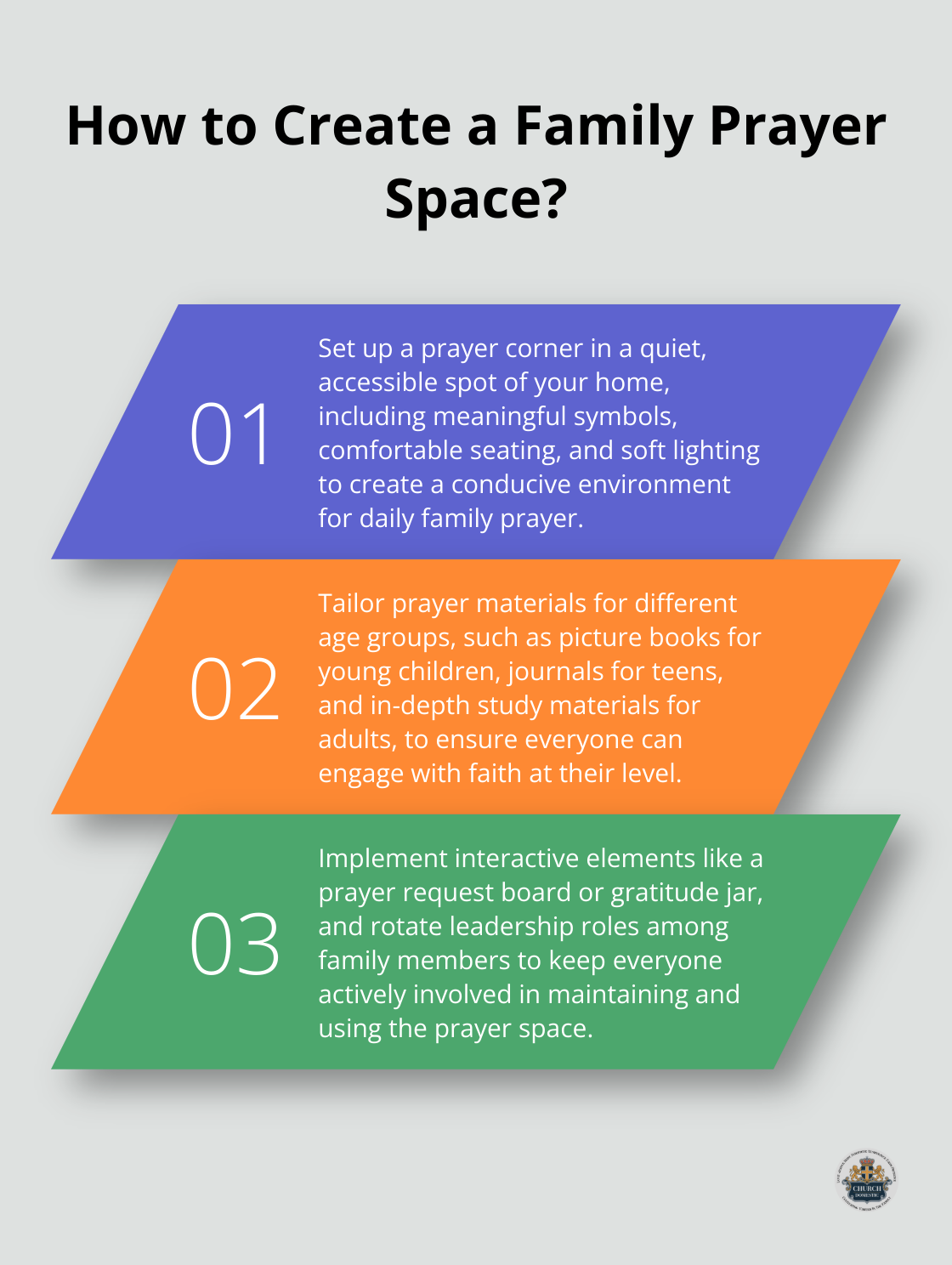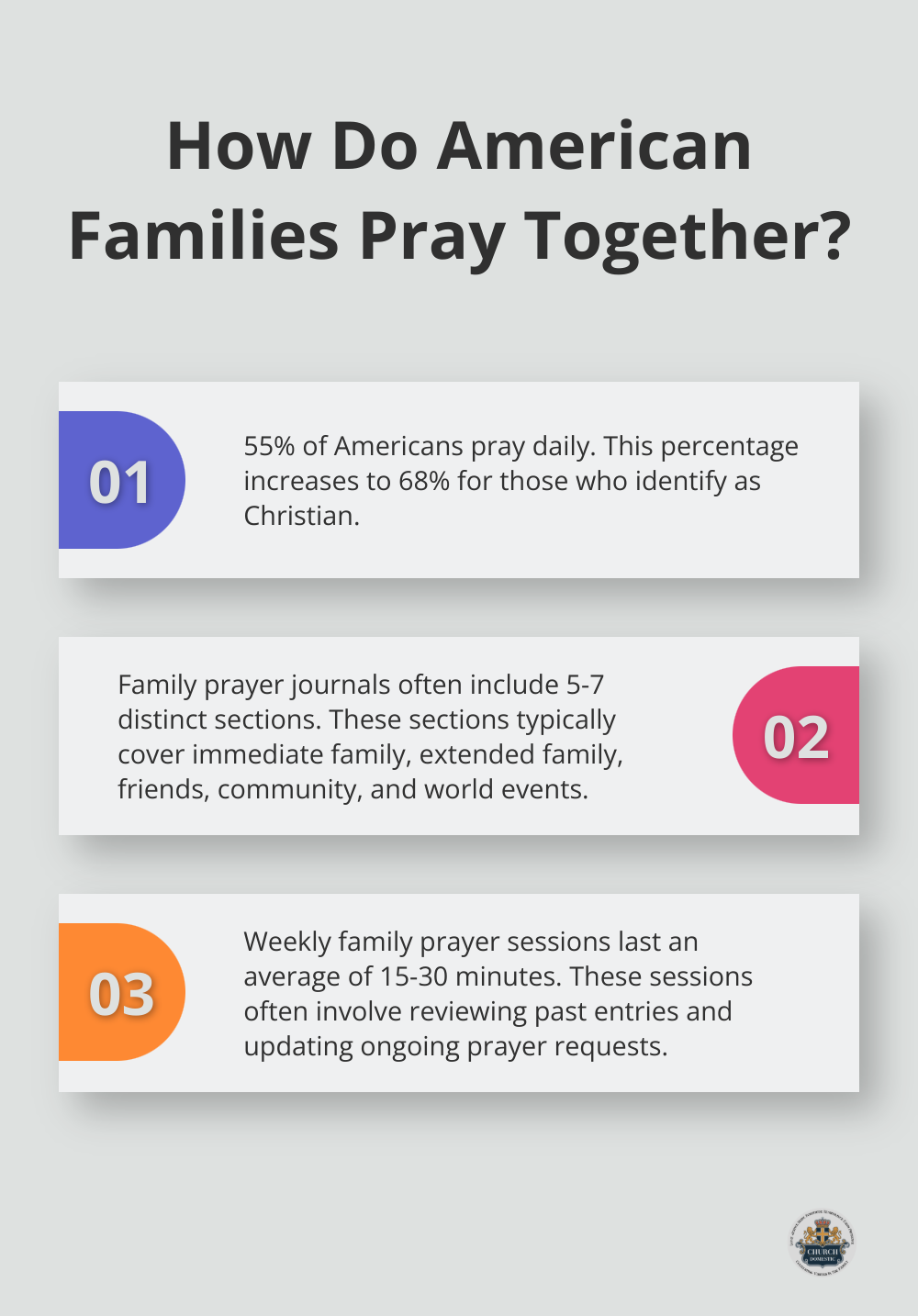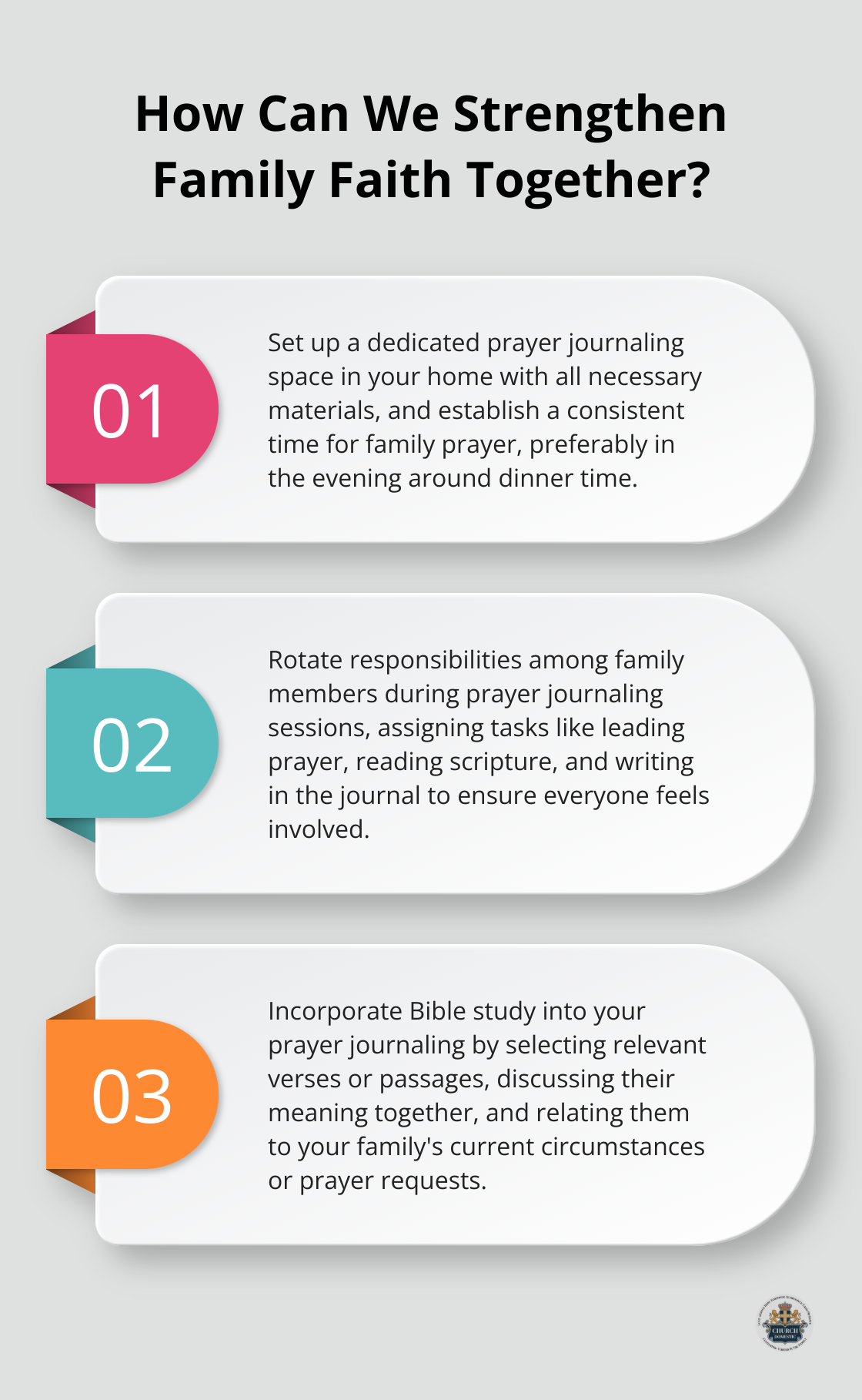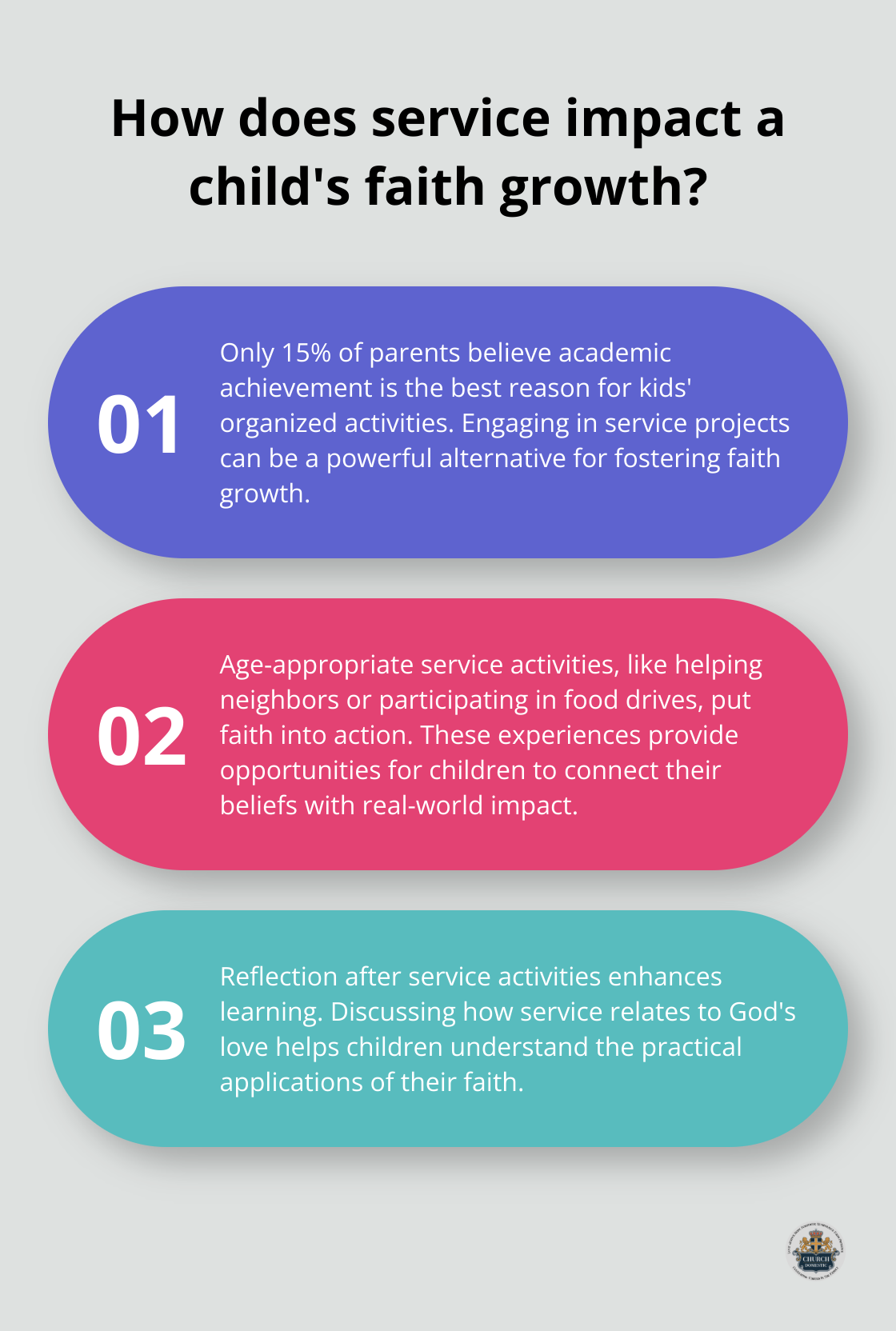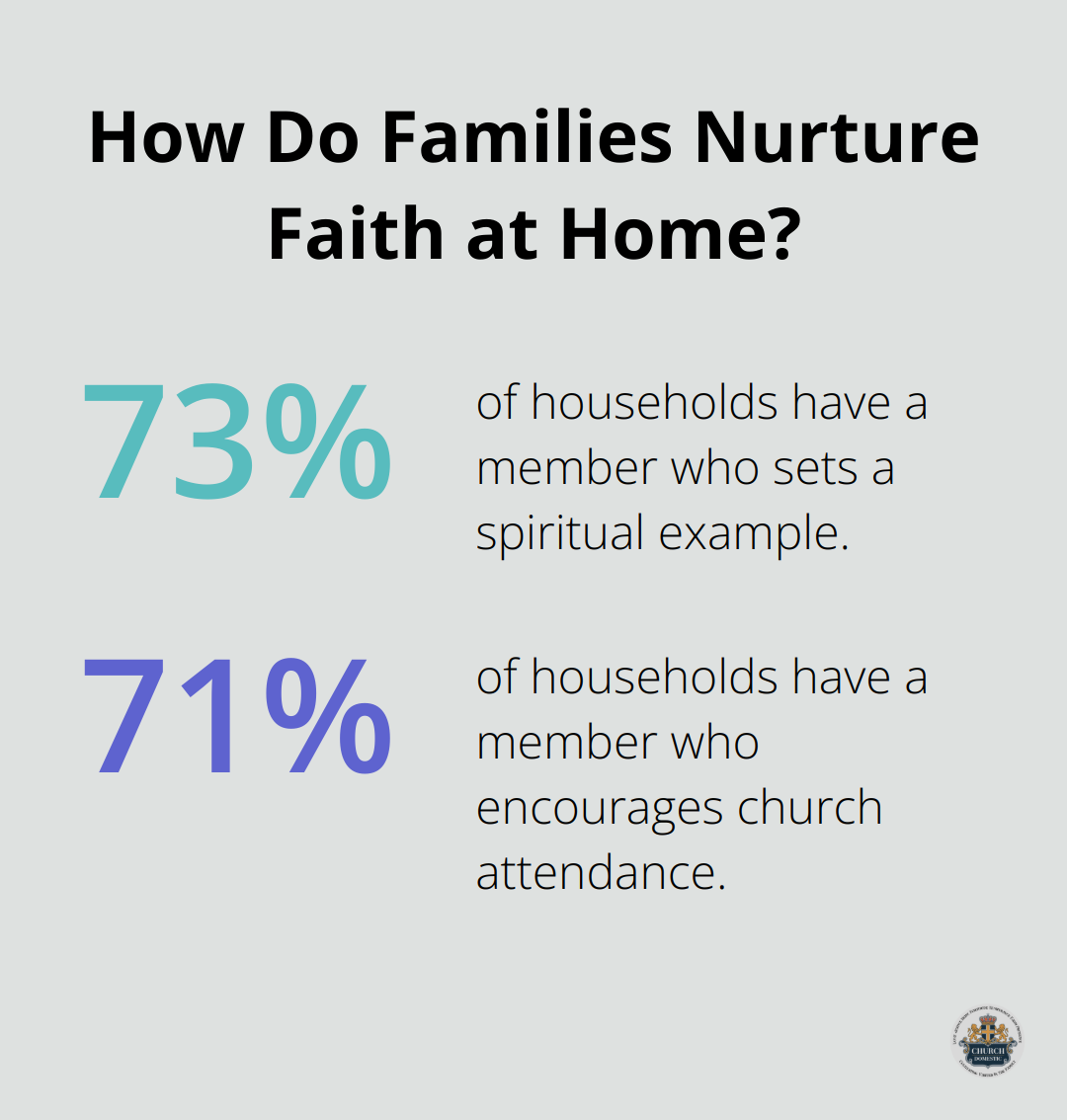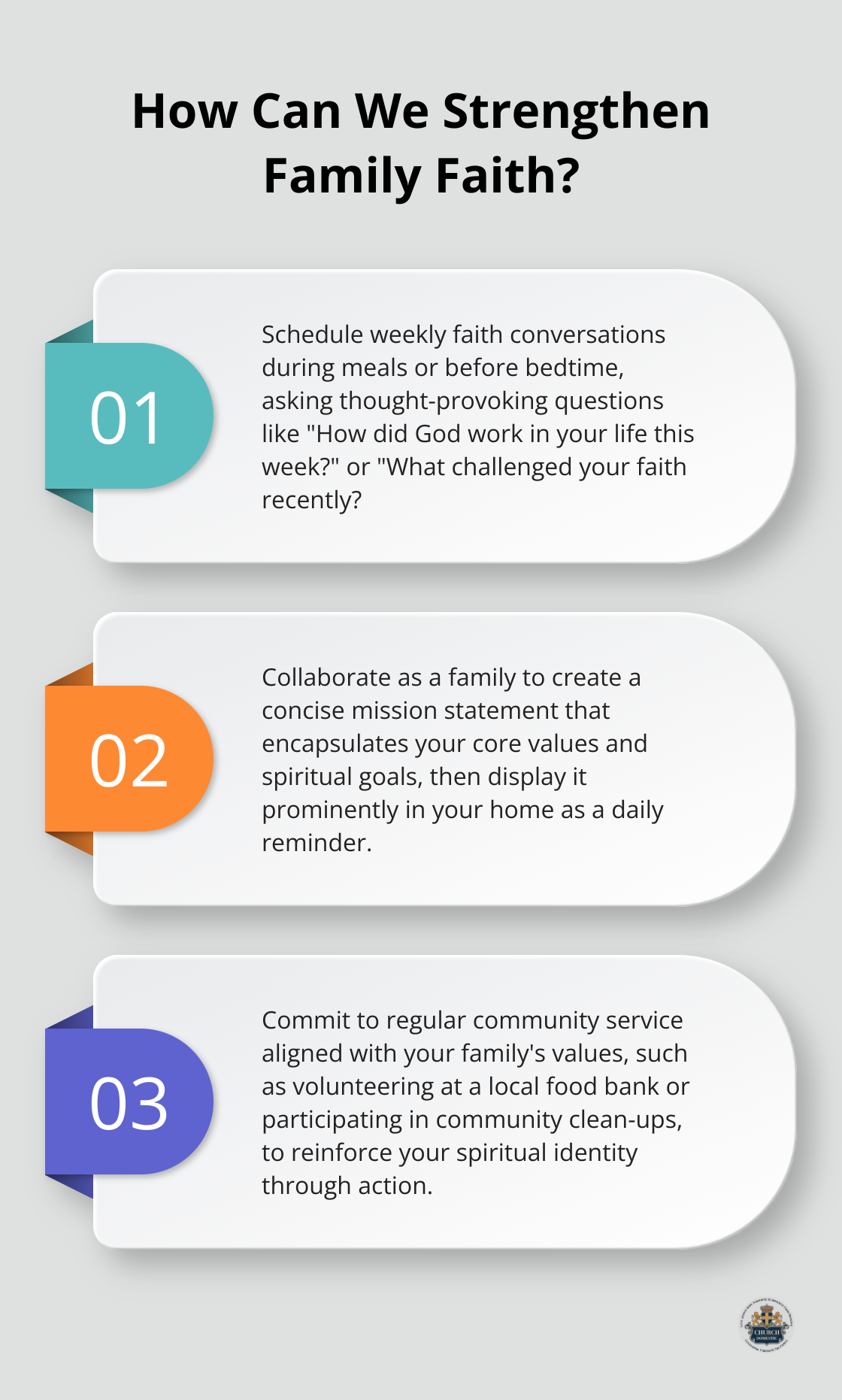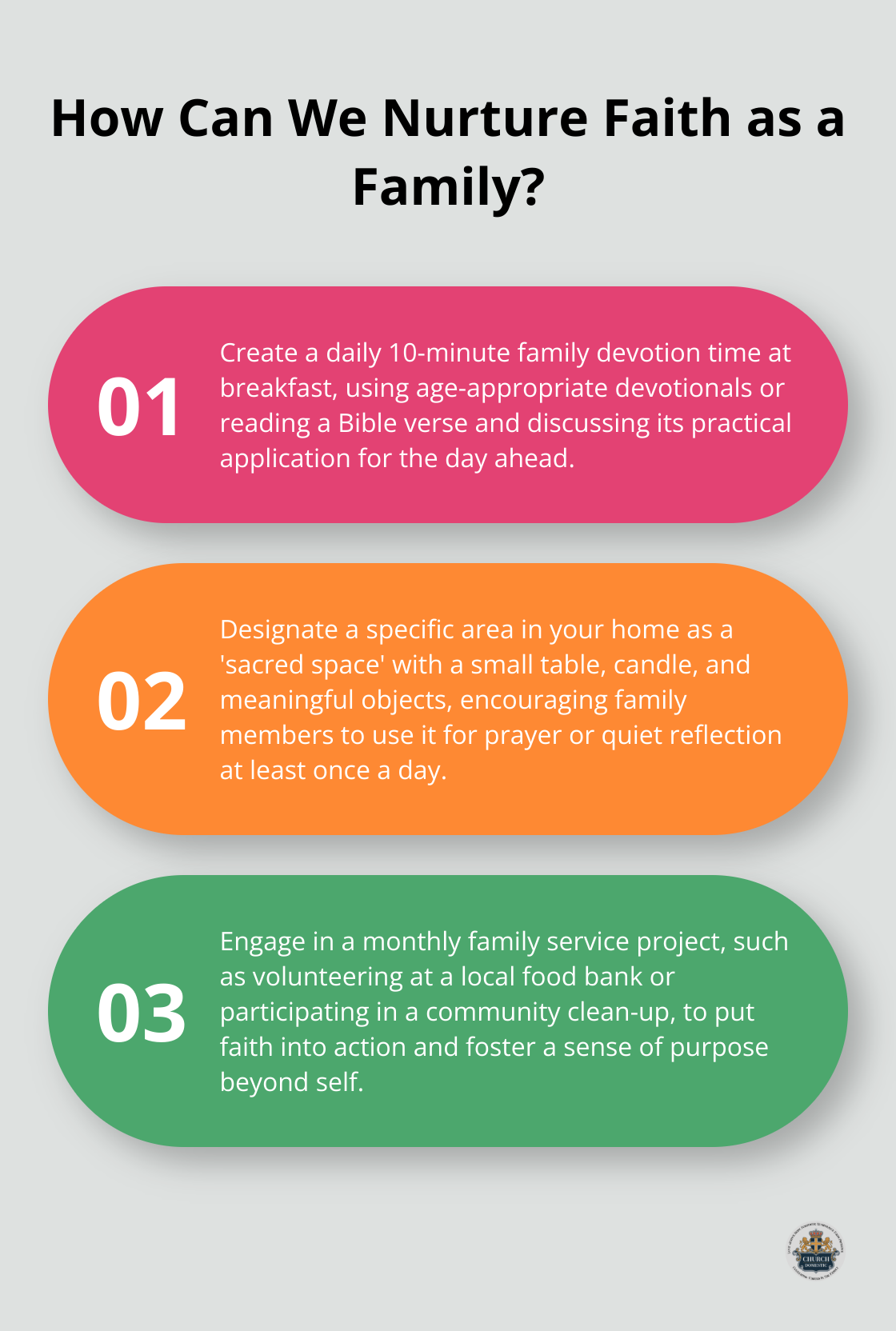At Church Domestic, we believe that faith conversations are the cornerstone of a vibrant spiritual life at home. These discussions can deepen family bonds, nurture spiritual growth, and provide a foundation for lifelong faith.
However, many families struggle to initiate and maintain meaningful dialogues about their beliefs. This post offers practical strategies to spark and sustain faith conversations in your household, helping you create a rich tapestry of shared spiritual experiences.
How to Create a Faith-Friendly Home Atmosphere
Creating an environment that welcomes faith discussions is essential for fostering spiritual growth within your family. The right atmosphere can transform casual conversations into profound spiritual experiences.
Design Your Sacred Space
Designate a specific area in your home for faith conversations. This doesn’t need to be an entire room; even a cozy corner will suffice. Add comfortable seating, soft lighting, and perhaps a small table for holding Bibles or devotional materials. Personal touches like family photos or meaningful religious symbols can make the space feel more inviting.

A study by George Barna, president of the Barna Research Group, proposes that discipleship involves spiritual disciplines such as Bible study and memorization. Display scripture art or a prayer board to keep faith at the forefront of family life.
Establish Faith-Focused Family Rituals
Consistency plays a key role in nurturing faith discussions. Create regular touchpoints throughout your week for spiritual conversations. This could include a nightly devotional before bed, a weekly family Bible study, or a monthly service project discussion.
One effective method is to implement a “Faith Friday” tradition. Use this time to reflect on the week, share spiritual insights, and pray together. The regularity of these rituals provides a sense of stability and expectation, making faith conversations a natural part of family life.
Conversation Starters That Spark Dialogue
Breaking the ice can challenge families, especially when discussing deep spiritual matters. Prepare a jar filled with faith-related questions or topics. During family gatherings, have each member draw a question to discuss.
Some effective prompts include:
- What’s one way you saw God working in your life this week?
- If you could ask God one question, what would it be?
- How can we show God’s love to our neighbors this month?
Try to tailor these questions to your family’s age range and spiritual maturity (the goal is to encourage open, honest dialogue where everyone feels comfortable sharing).
Create a Tech-Free Zone
In today’s digital age, it’s important to carve out spaces free from technological distractions. Designate your faith discussion area as a tech-free zone. This simple act can significantly enhance the quality of your conversations and help family members focus on spiritual matters.
Consider implementing a “device basket” where all phones and tablets are placed during faith discussions. This practice not only minimizes distractions but also symbolizes the importance of these moments of connection.
A landmark study by Gary Small, a UCLA professor of Psychiatry, performed brain scans to examine digital media technology use and its impact on the brain.
As we move forward, let’s explore how to integrate these faith conversations into the fabric of daily life, making spirituality a natural and ongoing part of your family’s experience.
How to Make Faith Part of Everyday Life
At Church Domestic, we believe that integrating faith into daily life extends beyond Sunday church attendance. Families who successfully weave spiritual principles into their everyday experiences often employ creative and practical approaches.
Spot God in the Ordinary
Transform mundane activities into opportunities for spiritual growth through “God-spotting.” This practice involves actively looking for God’s presence in ordinary moments. For example, when stuck in traffic, use that time to pray for other drivers or reflect on a Bible verse.

A community dialogue emerged out of a ‘God Spotting’ hui, forming part of a qualitative research project informed by Action Research. This approach can help families develop a deeper awareness of God’s presence in their daily lives.
View Current Events Through a Faith Lens
News events (both local and global) can serve as powerful catalysts for faith-based discussions. When you watch the news or scroll through social media, pause to consider how your faith informs your perspective on these events.
For instance, a discussion about a natural disaster might explore themes of God’s sovereignty, human suffering, and our responsibility to help others. Use this as an opportunity to spark a conversation about the power of prayer and compassionate action.
Implement Personal Faith Journaling
Try to encourage family members to keep a faith journal. This can be a simple notebook where they record daily reflections, prayer requests, or moments where they felt God’s presence.
Set aside time each week for family members to share entries from their journals (if they feel comfortable). This practice not only helps individuals process their faith journey but also opens up opportunities for family members to support and encourage one another.
Create Faith-Based Family Traditions
Establish unique family traditions that center around faith. This could include a monthly “Serve Saturday” where you volunteer together, or a weekly “Thankful Thursday” dinner where each family member shares something they’re grateful for. These traditions create lasting memories and reinforce spiritual values.
Incorporate Faith into Daily Routines
Find ways to infuse faith into your family’s daily routines. This could involve saying a prayer before meals, reading a Bible verse together before bedtime, or starting the day with a short devotional. The key is consistency and making these practices feel natural rather than forced.
As you implement these strategies, you’ll likely find that faith becomes less of a separate category and more of an integral part of your family’s everyday experiences. The next chapter will address how to tackle difficult questions and doubts that may arise during these faith conversations.
How to Navigate Tough Faith Questions
At Church Domestic, we understand that faith journeys often involve grappling with difficult questions and doubts. A safe environment for family members to express their uncertainties is essential for spiritual growth.
Create a Judgment-Free Zone
To foster open discussions about faith challenges, implement a “no judgment” rule during family conversations. This approach encourages honesty and vulnerability. A study by the Barna Group found that 36% of young adults who left the church did so because of unanswered doubts or questions. Address concerns before they become stumbling blocks by creating a safe space for expression.
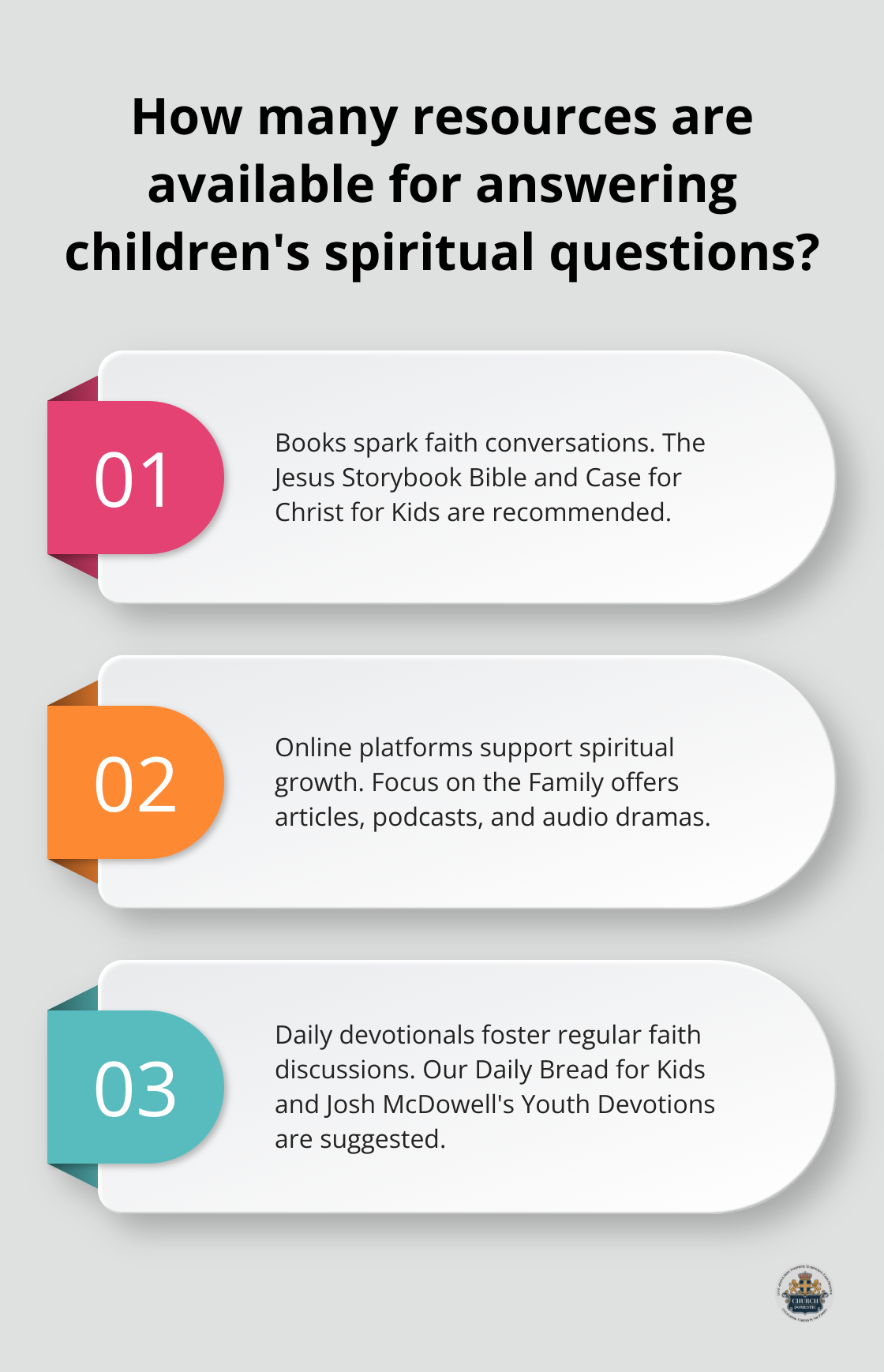
Encourage active listening without immediate rebuttals. When a family member shares a doubt, respond with empathy and curiosity rather than defensiveness. Ask questions like, “Can you tell me more about why you feel that way?” This validates their feelings and opens the door for deeper exploration.
Use Resources as a Family
When faced with challenging faith questions, turn to trusted resources as a family. The Internet contains vast information, but it’s important to discern credible sources. Start with reputable Christian apologetics websites or books by respected theologians.
For younger children, use age-appropriate Christian books that address common doubts. The “Case for Christ for Kids” series by Lee Strobel provides an excellent resource for elementary-aged children. For teens and adults, “Mere Christianity” by C.S. Lewis offers profound insights into Christian beliefs.
Organize a family book club to read and discuss a chapter of an apologetics book each week. This not only provides answers but also models the importance of seeking knowledge and understanding.
Reframe Questioning as Growth
It’s important to reframe doubts and questions as opportunities for growth rather than threats to faith. The Bible itself contains examples of faithful individuals wrestling with difficult questions. Job questioned God’s justice, and many Psalms express doubt and frustration.
Encourage family members to view their questions as a natural part of deepening their faith. Share personal stories of times when you’ve struggled with doubts and how working through them strengthened your beliefs. This normalizes the experience and provides hope.
Consider keeping a Faith Questions Journal where members can write down their doubts or challenging questions. This can be a new way to spend some spiritual quiet time and explore your Christian walk. Revisit these periodically to see how understanding has evolved over time. This practice can affirm, showing how wrestling with tough questions often leads to stronger convictions.
Addressing difficult faith questions doesn’t require having all the answers. It’s about creating a supportive environment where family members can explore, grow, and deepen their faith together. You can turn challenges into opportunities for spiritual development through open dialogue, resource utilization, and embracing the growth that comes from questioning.
Final Thoughts
Faith conversations at home require intentionality, patience, and creativity. Families can cultivate a rich spiritual life together by creating a welcoming environment, integrating faith into daily routines, and addressing difficult questions. Regular discussions during meals, bedtime, or weekly gatherings help normalize spiritual conversations and make them an integral part of family life.
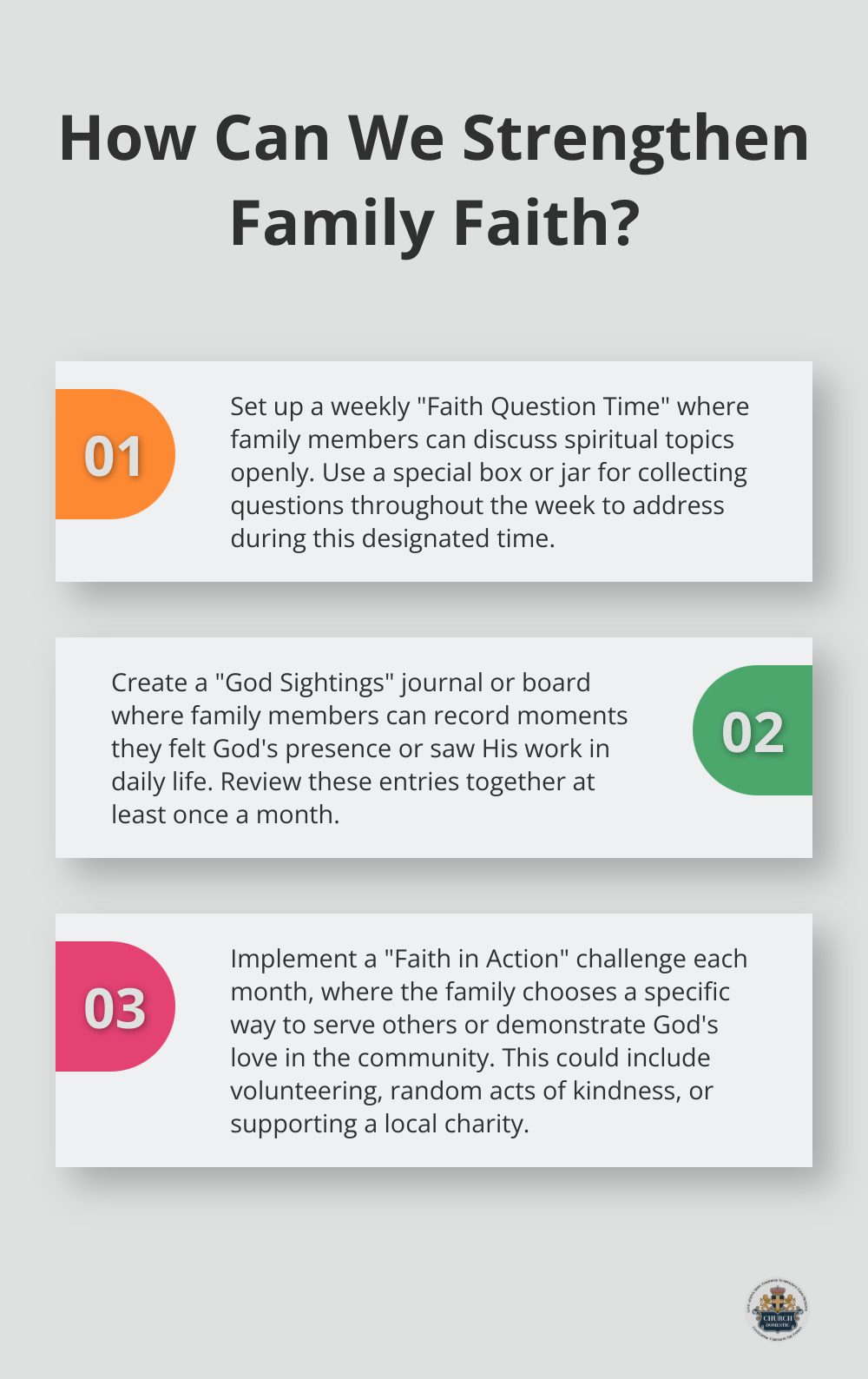
Children raised in homes where faith is openly discussed are more likely to develop a strong spiritual foundation. These conversations provide opportunities for family members to support one another through doubts, celebrate spiritual growth, and deepen their collective understanding of beliefs. You can start implementing these practices today with small steps, such as a daily prayer time or a weekly faith discussion.
For more resources and ideas on integrating faith into your family life, visit Church Domestic. We support you as you nurture faith conversations in your home. Faith discussions don’t have to be formal or intimidating (they can be as simple as sharing a moment of gratitude or discussing a meaningful Bible verse).
